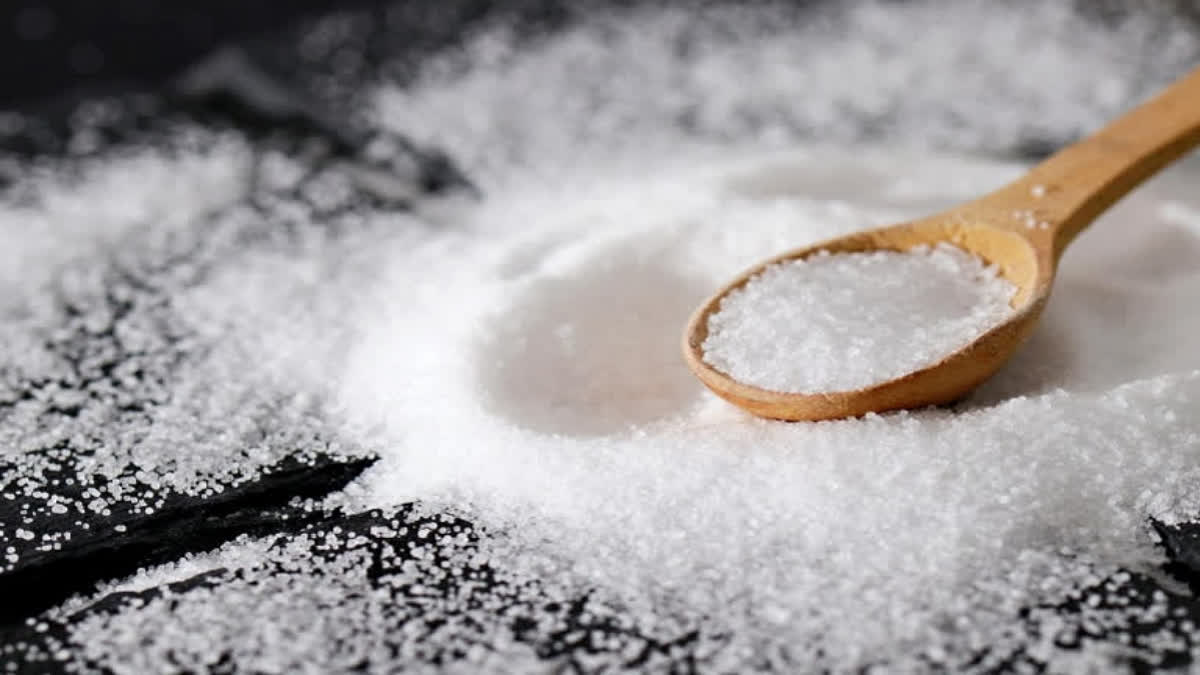New Delhi: Stating that a high intake of salt is associated with high blood pressure and related vascular and heart diseases besides increasing the risk of stomach cancer, the Indian Council of Medical Research (ICMR) has suggested restricting the intake of added iodized salt (sodium chloride) to a maximum of 5g per day.
It has also suggested developing a taste for foods and diets that are low in salt from an early age. “Restrict intake of processed and preserved foods such as snacks, sauces, ketchup, biscuits, chips, cheese and salted fish. Eat plenty of vegetables and fruits. These are good sources of potassium, which helps in the excretion of sodium and helps maintain blood pressure,” a latest guideline on dietary for the Indian population conducted by the Indian Council of Medical Research (ICMR) and National Institute of Nutrition (NIN) said.
Speaking to ETV Bharat, Dr Sreejith N Kumar, founder chairman, of the food safety initiative of the Indian Medical Association (IMA), said that excess intake is certainly not good for health.
“Increased salt (sodium chloride-NaCl) intake poses a health risk and may lead to hypertension and related heart diseases and stroke,” he said.
He said that high level of sodium in the bloodstream reduces the kidneys’ ability to remove water and increase the overall blood volume, placing stress on the body’s blood vessels. “High blood pressure can eventually lead to strokes and congestive heart failure,” said Dr Kumar.
What are the sources of sodium and potassium?
Habitual diets provide about 300–400mg of sodium per day. Cereals, pulses, vegetables, milk, animal and sea foods are the major sources of sodium. Foods like beans, lentils, bananas, dry fruits and coconut water are good sources of potassium. Indian food intake data indicates that the average consumption of salt ranges from 3g to 10g per day in different states with about 45 per cent of the population consuming more than 5g per day.
“Since the taste for salt is acquired, its consumption could be restricted right from an early age. Sodium is rapidly absorbed from the gastrointestinal tract and a positive balance can be achieved with intakes of not more than 5g of salt per day (equivalent to 2g of sodium). Sodium requirements depend on its losses through urine, faeces and sweat. The sweat loss varies according to climatic conditions. High ambient temperatures and vigorous physical activity increase sodium loss through sweat, the ICMR-NIN said.
How do sodium and potassium interact in the body?
Balance of sodium (Na) and potassium (K) in diets is essential for good health. While potassium intake has been decreasing gradually, there is a simultaneous increase in sodium intake, either as table salt used while cooking meals or through processed foods. This has resulted in a higher sodium: potassium (Na:K) ratio.
The current Indian as well as WHO recommendation for sodium intake is 2300mg per day, which translates to around 5000mg or 5g (1 teaspoon) of common salt per day. At this level of intake of sodium, the potassium requirement would be around 3800mg per day. It can be easily met by consuming the recommended level of vegetables (400g) and fruits (100g) per day, which will also lower the Na:K ratio. Along with fruits, vegetables and nuts are also good sources of potassium, the study said.
What are the health problems associated with excessive salt/sodium intake?
Existing evidence reveals a deleterious impact of high salt intake on blood vessels, blood pressure, bones and gastrointestinal tract. There is a strong association between salt intake and blood pressure. The prevalence of hypertension is low in the population consuming less than 3g of salt per day. The usual increase in blood pressure with age is also not seen with such intakes. The amount of salt consumed is reflected in urinary sodium levels. Restriction of dietary salt decreases the risk of hypertension. Potassium-rich foods such as fresh vegetables and fruits decrease blood pressure. Besides increasing blood pressure, excessive salt may also affect stomach mucosa and increase the risk of gastritis, atrophy and gastric cancer. Higher sodium intake leads to greater calcium excretion, which may result in a reduction in bone density. Salt intake in our population generally exceeds the requirement. It should not be more than 5g per day.
Are other varieties of salt any better
According to ICMR-NIN guidelines, all salt comes from sea salt--even edible salt, table salt or sodium chloride--salt is available in two forms, including refined and unrefined salts, which are consumed with a purity of 99 per cent and 96 per cent respectively.
“In addition to common white refined or non-refined salts, rock salt (pink salt-sendha namak and black salt-kala namak) is also used for specific recipes or occasions. Pink and black salts can be easily distinguished by their colour, texture and smell. Pink salt is one of the purest forms of salt. Black salt upon storage grows darker. Assorted spices, charcoal, seeds and tree bark are used in the preservation of this salt. Therefore, irrespective of the variety of salt, their consumption should be limited as the sodium content in them is almost similar,” the ICMR-NIN said.
Read more:Want To Lower Diabetes Risk? Stop Adding Salt To Your Dishes
